
Chat is online op maandag t/m vrijdag van 10.00 - 16.00 uur en van 19.00 - 22.00 uur.
Op dit moment zijn we offline. Je kunt je vraag stellen via e-mail of WhatsApp: 06-12887717 (alleen berichtjes)
Meer informatie over de chat-service? Klik hier


Chat is online op maandag t/m vrijdag van 10.00 - 16.00 uur en van 19.00 - 22.00 uur.
Op dit moment zijn we offline. Je kunt je vraag stellen via e-mail of WhatsApp: 06-12887717 (alleen berichtjes)
Meer informatie over de chat-service? Klik hier


Several “push and pull” factors resulted in thousands of Catholic Brabant folks immigrating to America. Changing economic conditions - especially limited quality land for farming, potato blight, and industrial disruption- along with Dutch government incentives contributed to these push factors. Available land in America’s upper mid-West under the Homestead Act of 1862 and recruitment efforts by several US states were pull factors. By the 1850s, the Fox River Valley in Wisconsin had an established Dutch Catholic community in what could be described as a frontier settlement. Despite the hardship of travel and difficult times for these early settlers, later emigrants had an easier time. Printed brochures and private correspondence triggered a slow but continuous chain of migration to Wisconsin from Noord-Brabant until the late 1920s.
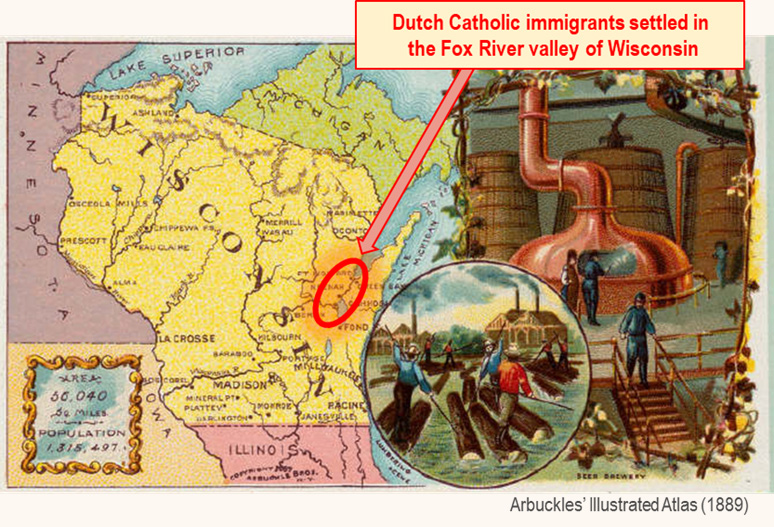 In the mid-to-late 19th century, in the towns and villages of the northeastern province of Noord Brabant, immigration to Wisconsin was under discussion. One such village was Kessel on the Maas river that had about 300 people and had been inhabited since approximately 100 AD (confirmed by Roman temple ruins). This farming community is where Johannes van Venrooij (b. 1836 in Heesch) and Petronella [Piketh] van Venrooij (b. 1832, Lithoijen) were married on 25 February 1867. Johannes was a land-owning farmer in the Kessel-Maren area, and they had three children: Johannes (b.1870), Gerdina (b. 1872) and Adrian (b. 1873).
In the mid-to-late 19th century, in the towns and villages of the northeastern province of Noord Brabant, immigration to Wisconsin was under discussion. One such village was Kessel on the Maas river that had about 300 people and had been inhabited since approximately 100 AD (confirmed by Roman temple ruins). This farming community is where Johannes van Venrooij (b. 1836 in Heesch) and Petronella [Piketh] van Venrooij (b. 1832, Lithoijen) were married on 25 February 1867. Johannes was a land-owning farmer in the Kessel-Maren area, and they had three children: Johannes (b.1870), Gerdina (b. 1872) and Adrian (b. 1873).
Between 1901 and 1920, 2,387 people from Brabant left for the US. Northeastern Brabant towns and villages had more emigrants than the rest of the province. Shipping companies, such Holland America Line (Rotterdam) and Red Star Line (Antwerp), advertised in printed publications to entice potential passengers. There was fierce competition among the ports of Rotterdam, Bremen, Hamburg, and Antwerp. An Atlantic crossing cost between 50 and 100 guilders per person.
 The van Venrooij family probably had a typical Brabant farm based on the three-field concept of crop rotation. The mix of farm products were rye, oats, corn, and potatoes and were intended for his family’s use and to feed his animals. Any surplus products could have been sold at the local market. At such a market, the farmer sold milk, butter, cheese, eggs, vegetables, fruits, and flowers. He earned some money to buy craft products or specialty items which he could not make himself. Many households combined farming with home spinning and weaving.
The van Venrooij family probably had a typical Brabant farm based on the three-field concept of crop rotation. The mix of farm products were rye, oats, corn, and potatoes and were intended for his family’s use and to feed his animals. Any surplus products could have been sold at the local market. At such a market, the farmer sold milk, butter, cheese, eggs, vegetables, fruits, and flowers. He earned some money to buy craft products or specialty items which he could not make himself. Many households combined farming with home spinning and weaving.
By the turn of the 20th century, just like his father Johannes (1836-1916), Adrian was a land-owning farmer and worked his farm with help from his old brother Johannes. On 6 February 1911, Adrian van Venrooij married Hendrika van der Heijden (b. 9 May 1877 in Rosmalen). Hendrika was the 2nd of eight children of Everardus (1842-1916) and Gerdina [Maas] (1847-1931) van der Heijden. Adrian and Hendrika’s five children were: John P. Van Rooy (b. 1911), Lambert Van Roy (b. 1913), Martin E. Ven Rooy (b. 1916), William Van Rooy (b. 1918) and Anna M. Van Rooy (b. 1919).
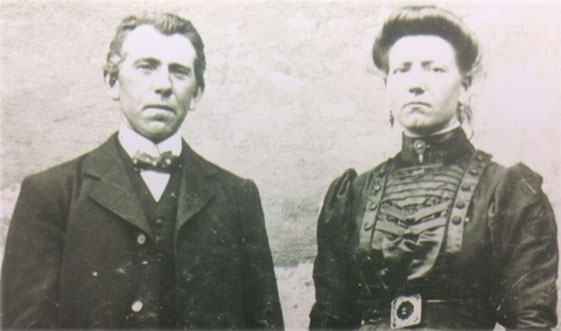
Although Adrian and Hendrika had the most property of their closest relatives, they felt trapped in the old farming traditions and subjected to periodic flooding in Maasland. They desired a better future for themselves and their children. After surviving World War I’s difficulties and having five children, immigration to an existing Dutch Catholic community in Wisconsin looked like a good opportunity for Adrian, his wife Hendrika, and his brother Johannes. Adrian’s sister Gerdina did not follow her brothers to Wisconsin. Instead, she married Thomas van den Boogaard (b. 1868, Alphen), and had two sons and three daughters: Peter (1908), Petronella (1909), Johannes (1910), Antonia Berdina (1912), and Agnes Johanna (1914). The van den Boogaard family remained in the Netherlands.
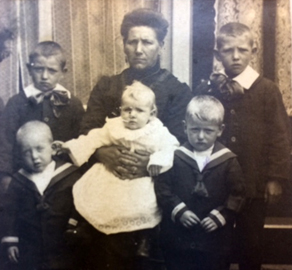
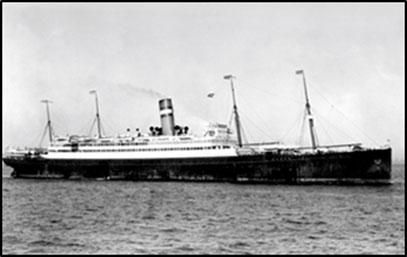
Fortunately, Hendrika’s young sister Johanna [Jans] (b. 22 July 1881, Rosmalen) had married Pete Ruijs (b. 10 June 1882, Nuland) in 1910, and they immediately immigrated to Wisconsin that same year on the ship S.S. Noordam. Johanna and Peter Ruijs settled in Kimberly, Wisconsin, and encouraged Adrian and Hendrika to come to America. Adrian and Hendrika van Venrooij with their five children and Johannes left Rotterdam on the S.S. Amsterdam and arrived at Ellis Island, New York, on 12 October 1920. The family of eight traveled by train to Buffalo and then by ship on the Great Lakes to Green Bay, Wisconsin.

The van Venrooij family with Johannes intended to relocate in North Dakota, but Pete Ruijs helped convince Adrian and Hendrika to stay in the Kimberly, Wisconsin area. Peter Ruijs helped Adrian get a job at one of the Kimberly paper mills. Two years later in 1922, the Van Venrooij’s bought the 110-acre Hopefield dairy farm in Kaukauna, Wisconsin.
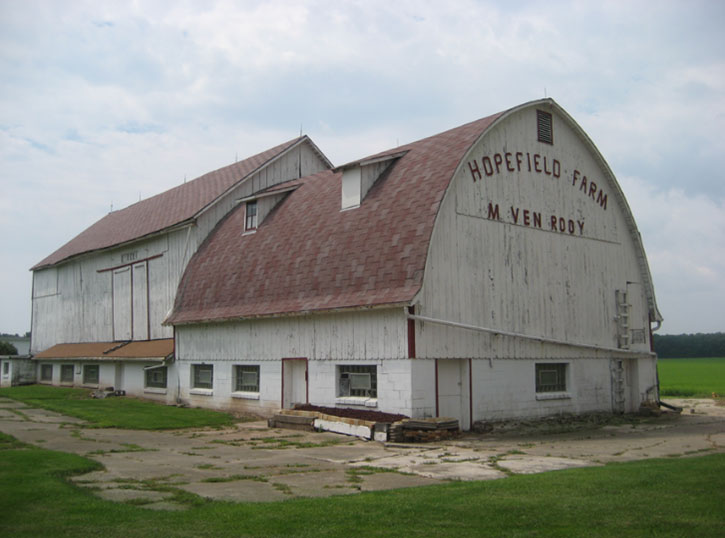
Johannes Van Venrooij (b. 20 February 1836, Heesch, d. 26 November 1916) parents were Adriaan van Venrooij (21 May 1791, Heesch, 14 September 1865, Heesch) and Joanna Maria [van Nistelrooij] van Venrooij (27 March 1800, Uden, d. 16 March 1873, Heesch). Based on the 1839 Netherlands census data, their home was at 7 Zoggelsestraat (Soggel), Heesch.
The Dutch in America: Immigration, Settlement, and Cultural Change by Robert P. Swierenga (editor) 1985
Faith and Family: Dutch Immigration and Settlement in the United States, 1820-1920 by Robert P. Swierenga 2000
Dutch Immigrants in U. S. Ship Passenger Manifests, 1820-1880 by Robert P. Swierenga 1983
The Dutch Americans by Victoria Olsen 1989
Wooden Shoes West by Scott Vandehey 1979
Little Chute – A Century of Progress 1899-1999 Louis J. Van Eperen (editor)
Wisconsin Land and Life: Geographic Portraits of the State by Robert Clifford Ostergren, Thomas R. Vale (editors) 1997
Dutch Catholic Immigrant Settlement in Wisconsin, 1850-1905 by Yda Schreuder 1990
The Dutch in America, 1609-1974 by Gerald F. DeLong 1975


